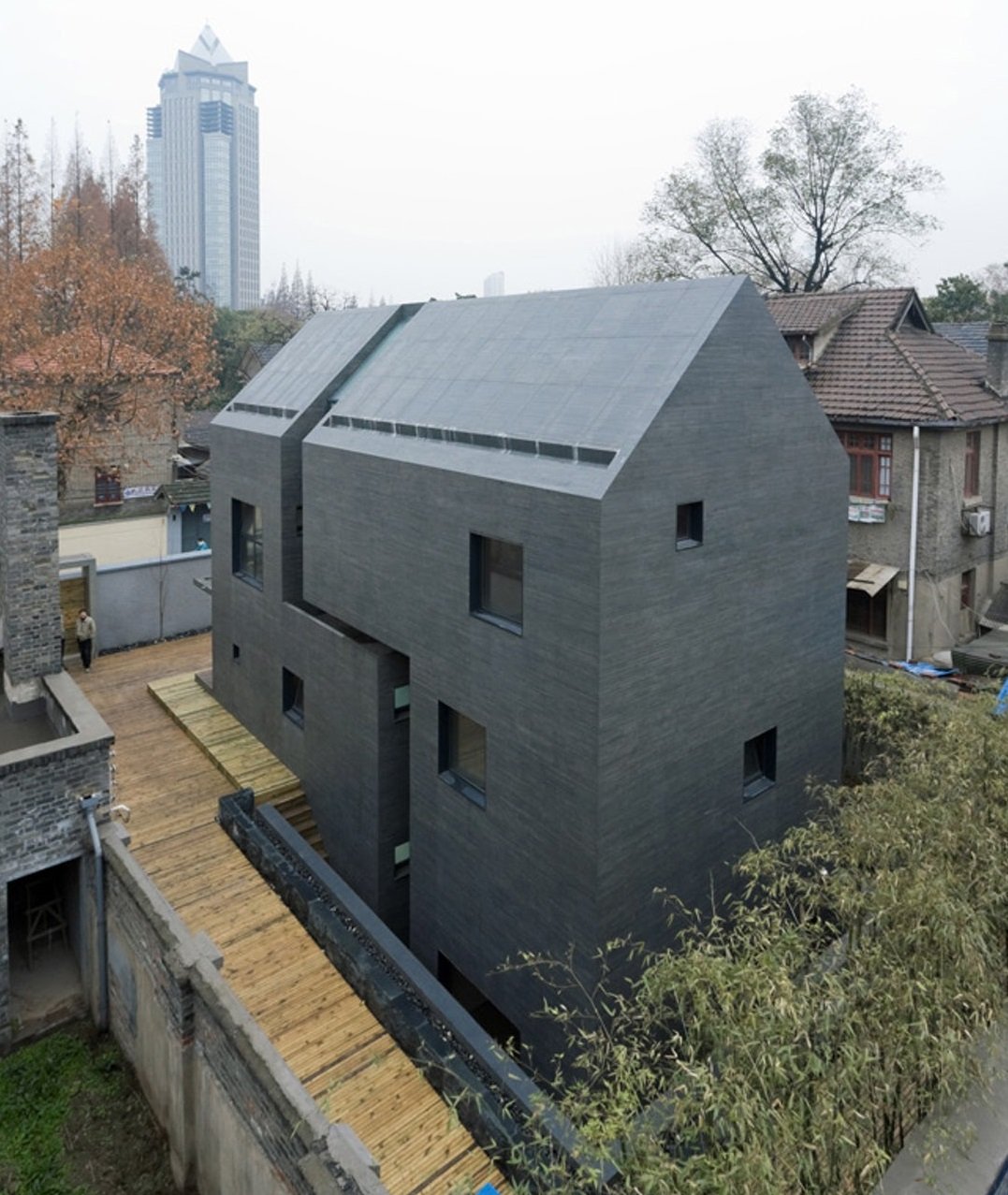#12656. Monolithic Dark Façade: Minimalism in Urban Context
Before me stands a minimalist contemporary house with distinct geometric forms, situated within the context of traditional urban development. The façade is executed in a monochromatic dark gray palette, creating a strong visual contrast with the surrounding buildings of lighter shades.
The architectural solution is built on the principle of reductionism — the building has a laconic form reminiscent of the archetypal house with a gabled roof, but reinterpreted in contemporary aesthetics. Particular attention is drawn to the façade, clad in a homogeneous dark material, presumably slate tiles or composite panels. The absence of pronounced decorative elements emphasizes the austerity and purity of lines.
The window openings are organized asymmetrically, varying in size and shape, which brings dynamics to the laconic volume. The upper level of the façade features horizontal light strips that soften the monolithic nature of the construction while ensuring natural illumination of the interior spaces.
An interesting solution is the wooden decking leading to the building and surrounding it on one side, creating a spatial transition between architecture and landscape. In the background, a high-rise tower of a modern business center is visible, highlighting the contrast of scales in the urban environment.
In designing one's own house, a similar approach to the façade can be utilized through monochromatic materials to create visual unity, asymmetrical placement of windows to provide interesting lighting scenarios inside the rooms, and the use of contrasts with the surrounding environment to enhance the architectural statement.
